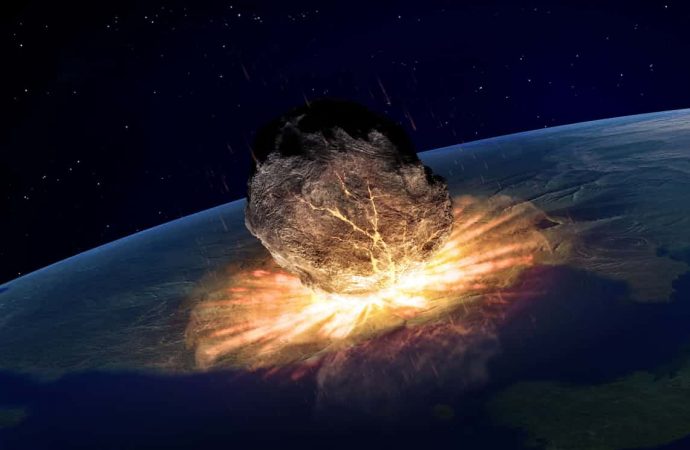Scientists believe asteroid set off chain of cataclysmic eruptions Violent eruptions occurred on floor of Pacific and Indian oceans
The giant space rock that wiped out the dinosaurs may have set off a chain of cataclysmic volcanic eruptions on land and undersea, claims a new study that is already dividing scientists.
About 66 million years ago, a six-mile wide asteroid smacked into earth, creating the Chicxulub crater in the Yucatan and sparking deadly chaos.
Extremely hot particles rained from the air, causing fires across the globe and increasing temperatures. Then it got worse.
Clouds of particles reflected the sun’s energy away, darkening the skies and cooling earth for several years. And that big hit set off earthquakes close to 100 times stronger than the biggest seen in modern times.
It was enough to kill off three-quarters of the life on earth, especially most of the creatures and plants on land.
But there were even more reverberations, possibly deadly ones, the new study says.
New evidence suggests the shaking triggered massive volcanic eruptions that spewed gases and particles into the air and water. A study in the journal Science Advances argues that after the asteroid crash, unusual and extra strong eruptions occurred on the floor of what are now the Pacific and Indian oceans.
The study authors calculate that those ejected a tremendous amount of molten rock underwater – so much that on land it would cover the entire continental United States a couple hundred feet deep or so.
“We’re showing there was a lot more going on than we thought,” said University of Minnesota geophysicist Joseph Byrnes, the study’s lead author. “We’re painting a new sequence of events.”
These underwater volcanic areas – called mid-ocean ridges – often erupt, even today. But this happened on a far larger scale.
What happened inside the underwater volcanoes is “totally analogous to a can of Coke that gets shaken. The whole thing turns into a frothy mess,” said Berkeley geologist Paul Renne, who said the study – of which he was not part – “illustrates how intertwined everything else is”.
Scientists are split over what really triggered the worst of the extinction: the impact of the crater and its plumes of debris, or other upheaval of the earth’s crust in the wake of the collision.
A study in 2015 suggested the collision made volcanic eruptions in India far more intense and deadly.
But if that were true, scientists said there should be evidence of increased volcanic activity elsewhere around the world, including underwater.
The new study found just those eruptions, bolstering the theory that connects hyped-up volcanic activity globally to the initial collision, said study co-author Leif Karlstrom, an earth sciences professor at the University of Oregon.
Scientists who downplay volcanic effects said the new study doesn’t prove its case.
“The signal that they see is really kind of feeble,” said Jay Melosh of Purdue University. “There’s something there, maybe. Whether it has to do with the impact is more questionable.”
Both Melosh and Sean Gulick of the University of Texas, who dug deep into the crater core recently, said the study is based on coincidental timing and doesn’t show a precise physical way the impact could have caused eruptions.
Because the ocean floor is so poorly explored, Byrnes and Karlstrom can only pin the date of the eruptions to a wide time band, one million years long.
Renne argued that the asteroid collision is an event that only happens once every 100 million years, and the Indian volcanic eruption is the type that happens once every 30 million years, so for the two to happen at the same time and not be related “is really pushing it”.
Source: The Guardian

































Leave a Comment
You must be logged in to post a comment.